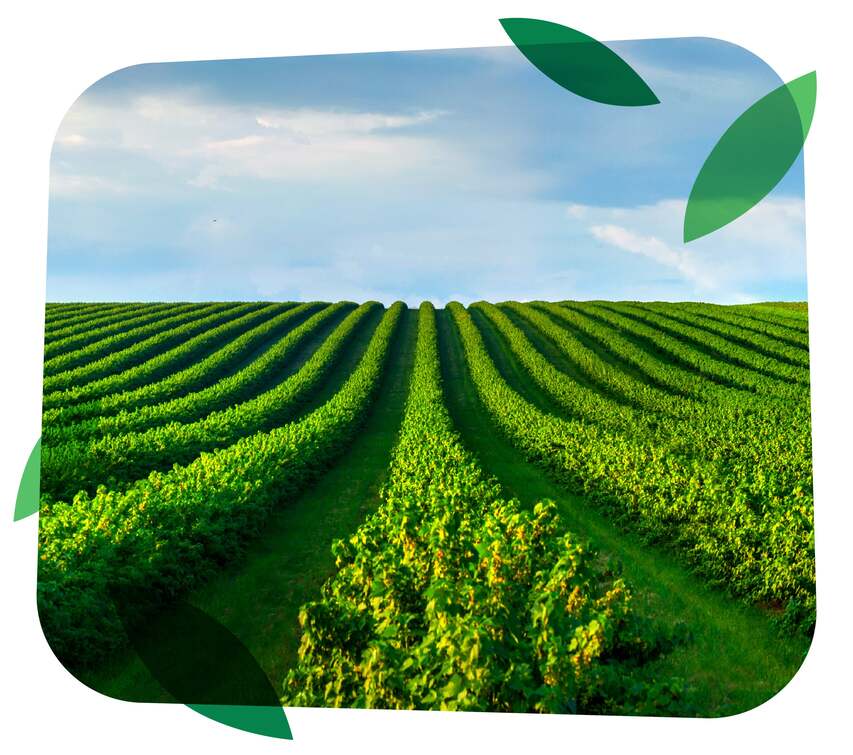Olive fertilizer: Multi-K increased by 10% the oil content of olives
| English
The trial, conducted in Turkey, resulted in increased quality of the olives, as well as more pulp and higher oil content
Foliar application of potassium nitrate fertilizer is a well-known and recommended procedure in olive orchards in Turkey, due to low potassium contents in many local soils. In a study carried out by Dikmelik, Puskulku & Altug of the Olive Research Institute at Ege University, Turkey, in 1998, with the important cultivar "Memecik", four foliar sprays were done at 4%.
Two foliar feeding treatments (20 days apart) were done after fruit-set (May); two additional sprays (20 days apart) were done after pit hardening (August). The sprays were done as 4% potassium nitrate at 1,000 L / ha, sometimes combined with urea. These foliar treatments were compared with the local commercial habit of the growers of side dressing with potassium-sulfate (SOP).
| Side dressing with SOP | Foliar feeding with potassium nitrate | |
|---|---|---|
| K contents in the leaves (% in D.M.) in December | 0.61 | 0.81 (+ 33%) |
| K contents in the fruit pulp (% in D. M.) at maturity | 1.56 | 1.65 (+6%) |
| Mean mass of 100 fruit units (g) | 217.5 | 278.7 (+28%) |
| Pulp/pit weight ratio | 2.90 | 3.54 (+22%) |
| Oil content in D. M. | 47.8% | 52.9 (+11%) |
| Crop/cultivar | Olive / Memecik (widely used for fresh consumption and oil extraction) |
|---|---|
| Country / location | Turkey / Izmir / Olive research institute, Kemalpasa |
| Objectives | Enhance quality of olives, compare K application methods: foliar by Multi-K vs. S.D. by SOP |
| Haifa product tested | Multi-K |
| Application method | Foliar nutrition |
| Tested treatment | 4 x foliar spray @ 4%. Twice (20 days apart) after fruit-set (May) + twice (20 days apart) after pit hardening (August). 1000 lit. /ha |
| Control treatment results | 100 fruit units’ weight: 217.5 g. Pulp/pit weight ratio: 2.90 Oil content: 47.8% in D.M. Total yield: 2.47 m3 K content in December (fruit maturity): leaves – 0.61 B; fruit pulp – 1.56 |
| Best treatment results | 100 fruit units’ weight: 278.7 g. Pulp/pit weight ratio: 3.54 Oil content: 52.9% in D.M. Total yield: 2.14 m3 K content in December (fruit maturity): leaves – 0.81 A; fruit pulp – 1.65 |
| Characteristics of best treatment | 28% increase in mean size of fruit. 22% increase in pulp/pit weight ratio. 10% increase in oil content. All these parameters are closely correlated to K content of the leaves and fruit. There was a 13% reduction in yield |
| Conclusions | This treatment should be adopted in all olive-growing areas with low soil-K content, in Turkey and elsewhere. Treatments should be continued also during the 2nd expansion period of the fruit, until maturity , in order to increase its oil content. |
| Reference | Dikmelik, Puskulku & Altug. Olive Research Institute, Ege University, Turkey. A presentation made in a Fruit Quality scientific meeting. |
Treatments positively affected the fruit size, 100-fruit weight, fresh weight and pulp: pit ratio when compared with the SOP treatment. The oil percentage increase and the quality of the treated olives was highly improved due to increase in size, higher pulp / pit ratio and higher oil content.
Want to learn more about fertilization of olive trees? download our complete guide - "Nutritional recommnedations for olives"
Need more information about growing olives? You can always return to the olive fertilizer & olive crop guide table of contents




